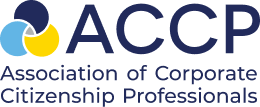 Joe Ruiz, Director, UPS Humanitarian Relief & Resilience Program, shared his insights on approaching disaster relief.
Joe Ruiz, Director, UPS Humanitarian Relief & Resilience Program, shared his insights on approaching disaster relief.
1. UPS has a framework in place to manage disaster relief responses. How does it adjust when two large disasters happen so close to each other?
Our framework allows us to manage multiple disasters simultaneously because we have multiple partners and we have previously allocated emergency funding and transportation budgets to be used when needed. We are not only responding to Harvey and Irma, we are also responding to the wildfires in the west, mudslides in Sierra Leone, providing refugee support in Bangladesh and South Sudan, and delivering food for famine relief in Somalia and closer to home working with Good360 to help over 100 families from Baton Rouge re-furnish their homes.
2. How should CSR leaders encourage their fellow employees to respond to disasters?
Encouraging employees to give cash, not stuff is recommended by agencies like CIDI.org. Employees should never self-deploy. We recommend that employees connect with leading volunteer organizations like Points of light foundation, Hands on Affiliate network agencies or local agencies that are helping with response efforts.
3. What traits should CSR professionals look for when identifying a community partner to work with when responding to a disaster?
We look for organizations that are highly effective at what they do, whether its community preparedness, early response or long-term recovery. We look for organization that are open to enhancing their infrastructure through innovation and technology, and who are open to building public-private partnerships.
4. UPS launched a drone program to help assess damage faster and reach areas unable to be reached by vehicles or people. Will that change your response framework?
Our Humanitarian Relief & Resilience Program framework is based on 4 pillars (partners, skilled volunteers, thought leadership, and leveraging our global network) across all phases of the disaster spectrum of mitigation, preparedness, urgent response and long-term recovery). The drone program is one of our innovation efforts to improve the time it takes to complete damage assessments. The framework guides our efforts to help speed community recovery. The drone project with the American Red Cross and Cyphy Works will seek to help the ARC complete community damage assessments quickly so families can receive emergency financial assistance more quickly.
5. What is the most important lesson you learned related to effective disaster relief?
Relationships determine results. Building strategic partnerships in advance of disasters, incorporating your core competencies and employee expertise to improve disaster preparedness, response or recovery processes can help mitigate disaster impacts and also speed the road to recovery. In addition, share information with your employees about disaster preparedness throughout the year, hold disaster drills (evacuation, shelter in place, earthquake etc. and provide lunch and learn sessions with experts and financial disaster preparedness, etc.)
Here are some quality organizations that we support:
Disaster Preparedness – Safe America Foundation, US Chamber of Commerce Foundation, Ad Council, American Red Cross Annual Disaster Giving Program. Center for Disaster Philanthropy
Response – American Red Cross, Salvation Army, CARE, UNICEF, World Food Programme, National Voluntary Organizations Active in Disaster (NVOAD.org)
Recovery – Good360.org to donate product; Operation Hope – Hope Coalition America to provide employees and small businesses recovery guidance; SBP (formerly St. Bernard Project) to provide training and help people with rebuilding, guidance to avoid contractor fraud, Toolbank USA – Toolbank Disaster Services support voluntary agencies active in disaster with Tools to help families muck out after returning to their homes.
Refugee Support – UNHCR
